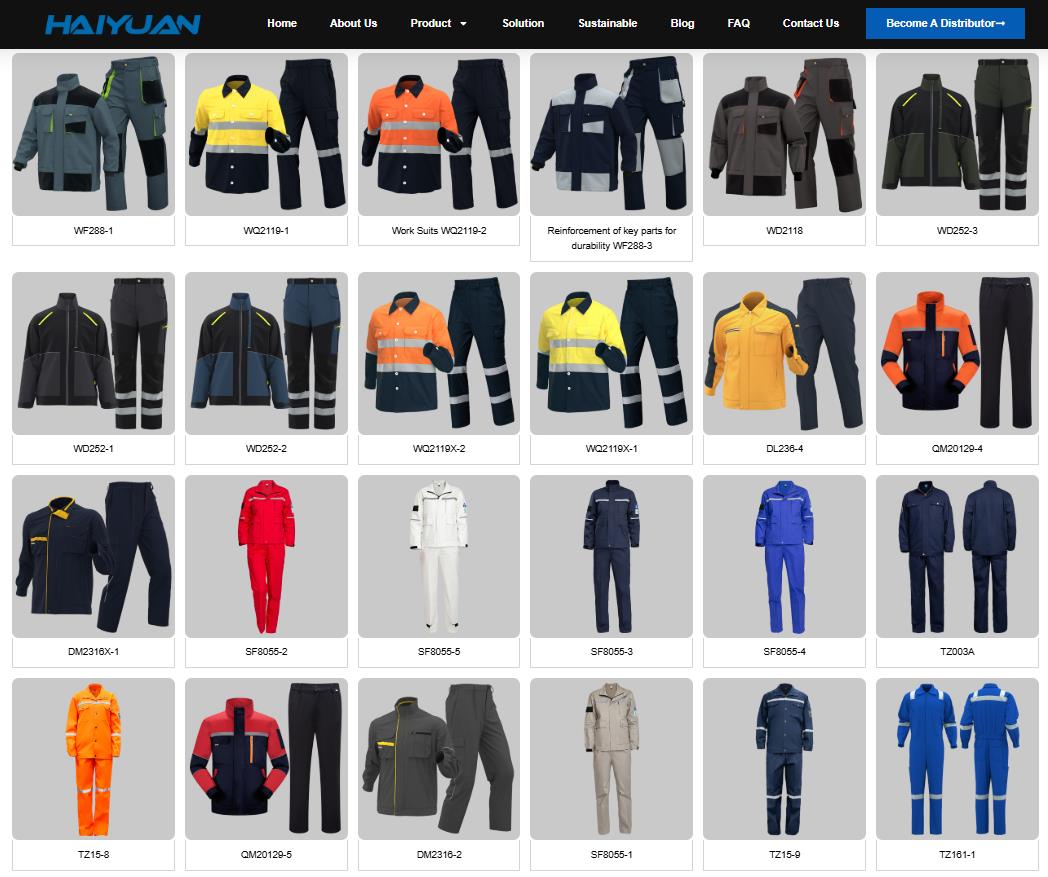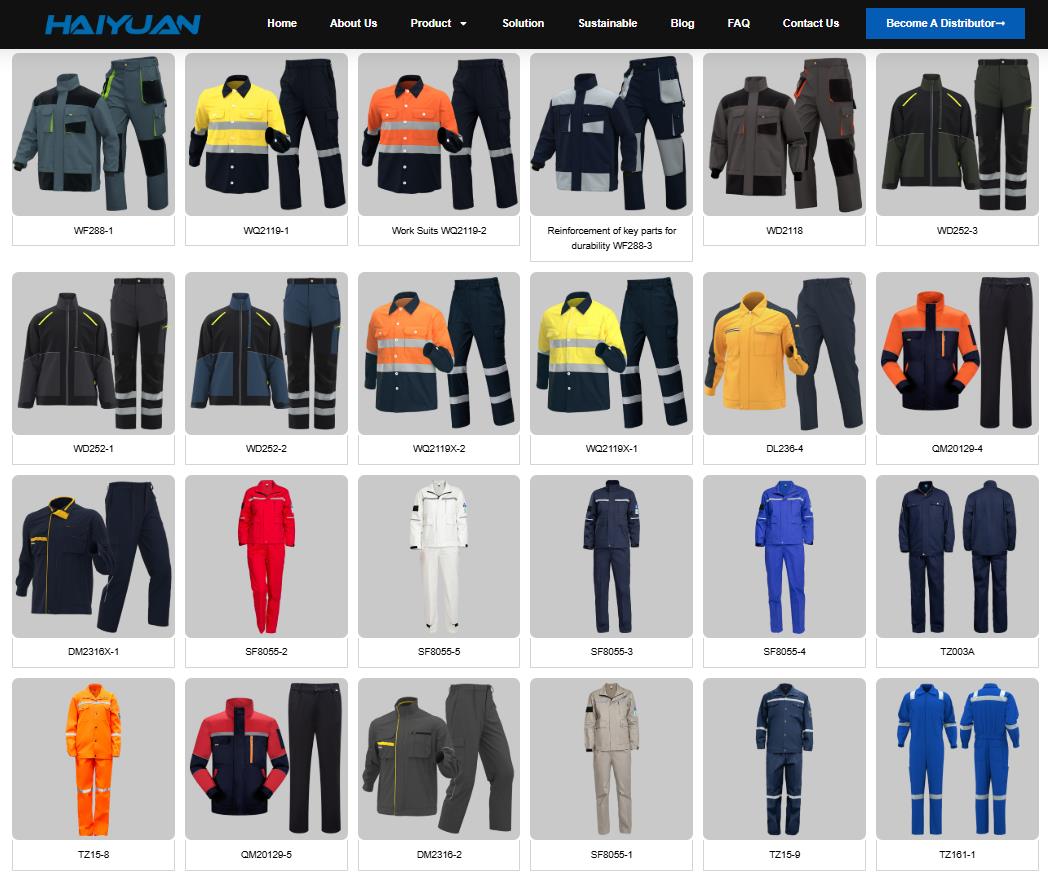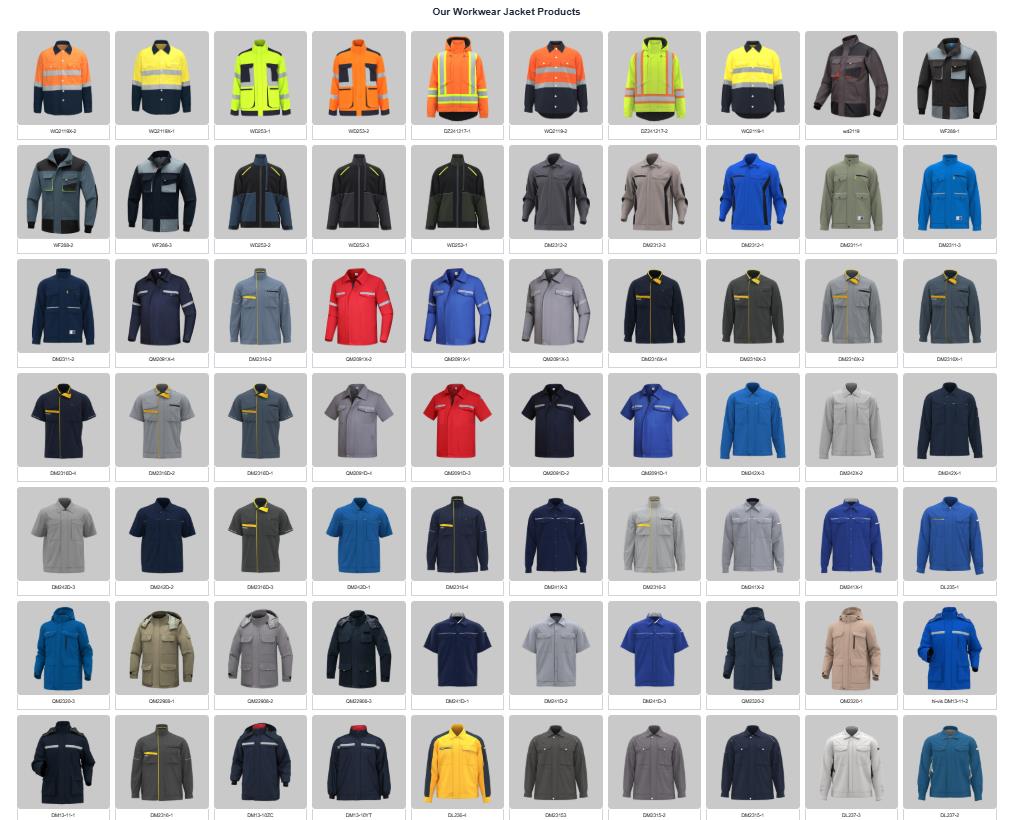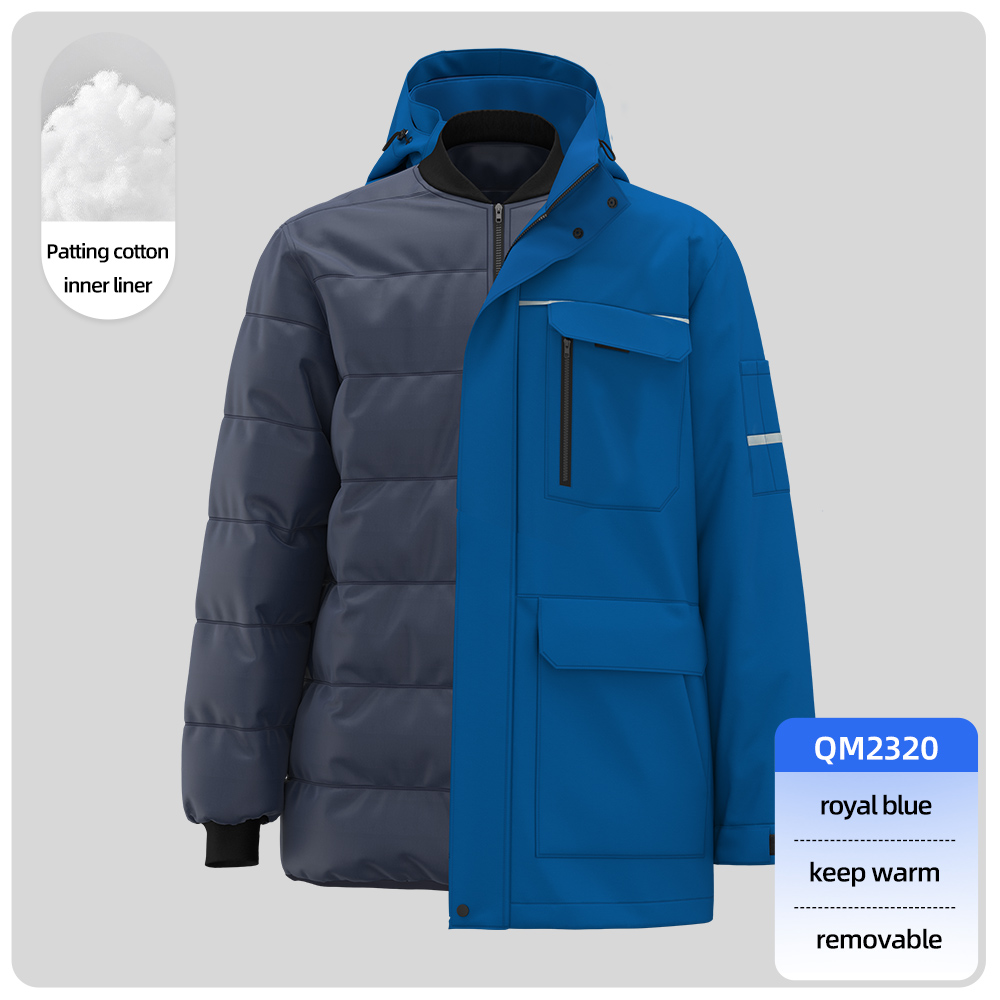When importing work clothes from China for the first time, pay attention to these critical factors to ensure quality, compliance, and smooth operations:
1. Regulatory Compliance & Safety Standards
-
Mandatory Certifications: Verify certifications like CE (EU), ANSI/ISEA (US), AS/NZS (Australia/NZ), or GB Standards (China). For flame-resistant (FR) clothing, ensure NFPA 2112 compliance.
-
Labeling Requirements: Ensure proper care labels, fiber content, and safety symbols (e.g., ISO pictograms).
-
Restricted Substances: Test for chemicals (e.g., AZO dyes, formaldehyde) under REACH, CPSIA, or Oeko-Tex® standards.
2. Supplier Vetting
-
Factory Audits: Conduct on-site/SGS audits for production capacity, working conditions (no forced labor), and quality control.
-
Trade Alibaba “Gold Suppliers” lightly: Verify business licenses (via China’s National Enterprise Credit Information Publicity System) and request references.
-
MOQ Flexibility: Negotiate Minimum Order Quantity (MOQ) – start small to test quality.
3. Product Specifications & Quality Control
-
Tech Packs: Provide detailed specs (fabric GSM, stitching SPI, color Pantone codes, sizing charts).
-
Pre-Production Samples: Approve 3+ prototypes before mass production.
-
Inspection Protocols: Hire third-party inspectors (e.g., SGS, QIMA) for:
-
Pre-shipment Inspection (PSI): Check 100% of packaging/labels and 15-30% of goods.
-
During Production Check (DPI): Catch issues early.
-
4. Cost Considerations
-
FOB vs. EXW: Understand Incoterms – FOB shifts risk to buyer after loading; EXW includes all logistics.
-
Hidden Costs: Factor in duties (e.g., US: 10-25% for workwear), VAT, customs brokerage, and shipping insurance.
-
Payment Terms: Use secure methods (e.g., 30% deposit, 70% against BL copy via L/C).
5. Logistics & Customs
-
HS Codes: Classify correctly (e.g., US: 6211.33/6211.43 for protective garments) to avoid delays.
-
Documentation: Prepare commercial invoice, packing list, BL, and certificates of origin (Form A for GSP countries).
-
Import Regulations: Check for:
-
US: CPSC, FTC labeling, and CBP forced labor screening (UFLPA).
-
EU: PPE Regulation (EU) 2016/425, REACH.
-
6. Cultural & Communication Best Practices
-
Clear Contracts: Include penalties for defects/delays (e.g., 1% of order value per week).
-
Time Zones: Overlap communication windows (China: 9 AM–6 PM CST = 9 PM–6 AM EST).
-
Avoid Assumptions: Confirm all details in writing – e.g., “heavy-duty zipper” should specify YKK #8 vs. #5.
7. Sustainability & Ethics
-
Verify Supply Chain: Map subcontractors to avoid unauthorized outsourcing.
-
Environmental Claims: Support “eco-friendly” claims with certifications (e.g., GRS, Oeko-Tex®).
Key Risks to Mitigate
-
Quality Fade: Batch testing prevents suppliers from substituting cheaper materials.
-
IP Theft: Register designs/trademarks in China and use NDAs.
-
Delays: Build buffer time (+30%) for production/shipping; monitor Chinese holidays (e.g., CNY, Golden Week).
Pro Tip:
Start with a trial order (≤30% of planned volume) to test the supply chain before scaling. Use inspection reports as leverage for renegotiations.
By addressing these areas systematically, you’ll minimize risks and establish a reliable sourcing pipeline. Always consult a local customs broker and legal expert familiar with your market’s regulations.
Related Reading:
Guide to Importing Work Clothes from China for the First Time
How to complete your first purchase of workwear in China safely and efficiently





